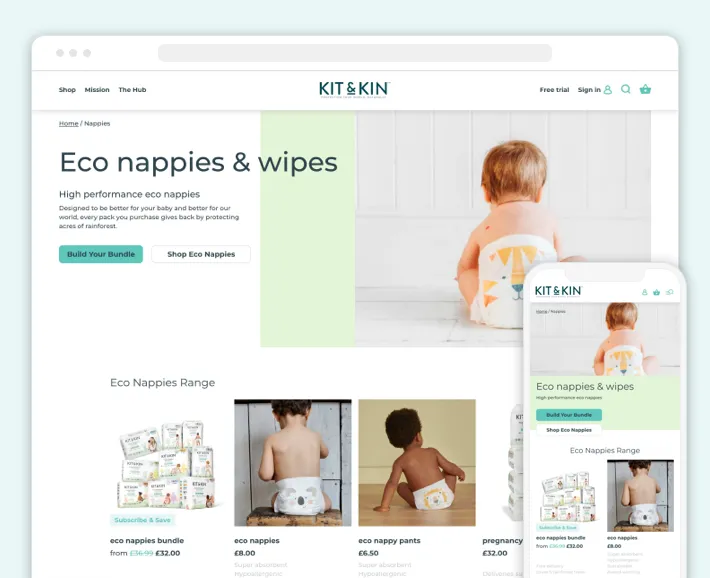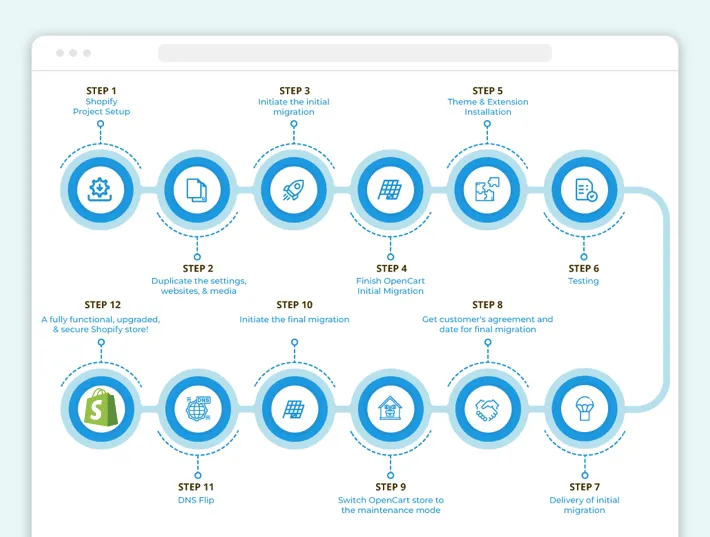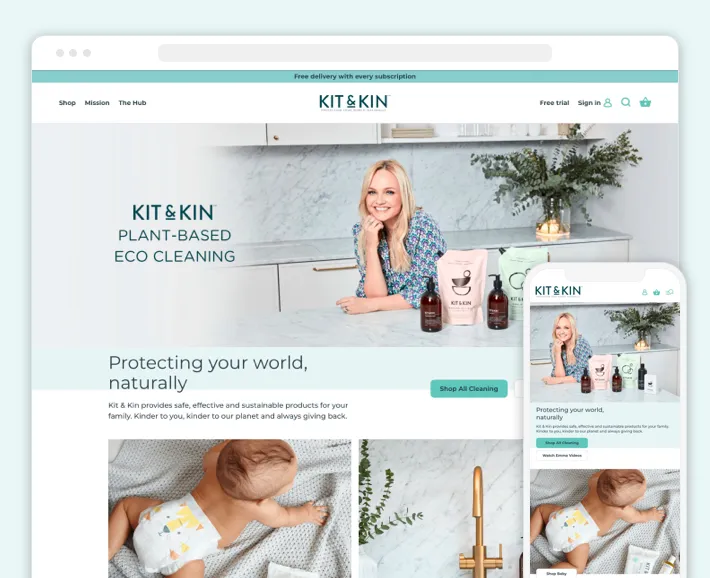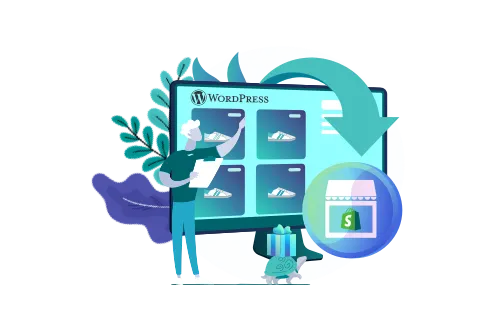With high competition in the ecommerce industry and online shopping on the rise, businesses are rushing to get an advantage. Hosting your site on a powerful platform is the most reliable way to do it, which leads many to OpenCart to Shopify migration. When done quickly and with no data loss, the move is sure to open up new possibilities.
With 10+ years of expertise in the ecommerce field, we know all the ins and outs of migrating e-stores to Shopify. In this article, we’ll show you how to migrate OpenCart to Shopify and why. We’ll guide you through data imports, give step-by-step instructions on the actual store transfer, and offer advice on what to change along with your move.

Table of Contents
-
How to Migrate from OpenCart to Shopify in Ten Steps
- Step 1: Backup Your OpenCart Store
- Step 2: Set Up Your Shopify Store
- Step 3: Export Your Data from OpenCart
- Step 4: Import Data to Shopify
- Step 5: Transfer Product Images
- Step 6: Set Up Products in Shopify
- Step 7: Configure Shopify Theme
- Step 8: Set Up Redirects
- Step 9: Test and Review
- Step 10: Inform Customers and Update Marketing
- Why Migrate from OpenCart to Shopify?
- What Data Can Be Migrated from OpenCart to Shopify?
- Approaches to Migrate OpenCart to Shopify
- GenovaWebArt Experience
- Conclusion
- FAQ
How to Migrate from OpenCart to Shopify in Ten Steps

It’s essential to know the steps of the OpenCart to Shopify migration if you decide to do the process yourself. Here’s an OpenCart to Shopify migration checklist.
Step 1: Backup Your OpenCart Store
Simply open the admin panel, go to System, and choose the Backup & Restore page. This will let you save the data as CSV files. It’s an essential starting requirement because it will let you recover quickly if any errors occur.
Step 2: Set Up Your Shopify Store
Create a Shopify account, pick your pricing tier, and create a template store. No need to spend too much time on it now; the customization comes later. One important note, though: do not create a store using a “trial” account. You won’t actually be able to launch it, so make sure you have activated a full account first.
Step 3: Export Your Data from OpenCart
Using an extension, export all relevant data from the store. This can be done in various formats, including Excel spreadsheets and CSV files. The process is done through the System > Import/Export page and is pretty straightforward.
Step 4: Import Data to Shopify
Go to various submenus on your Shopify admin page, such as Products and Customers. There, click Import and choose the relevant CSV files. You should have separate ones for each data category, so you can’t mix up shopping cart data with product information.
Step 5: Transfer Product Images
Make sure to save all product images from your OpenCart store in a separate folder. Upload images to your Shopify store via Shopify's file manager or third-party apps allowing bulk image uploads.
Step 6: Set Up Products in Shopify
Once you’re done moving data from OpenCart to Shopify, ensure each product in Shopify has the right image.
Set up the essential details: product variants, prices, etc.
Step 7: Configure Shopify Theme
The next stage is to work on your store’s usability and design. You can add a few Shopify extensions to improve the user experience, integrate payment processors, and change the look of your pages. This can be done with free themes or by creating a custom Shopify Theme. The theme determines what your customers see, so pay special attention to it.
Step 8: Set Up Redirects
When you move between stores, some pages will lead to nowhere. Since some customers might have them bookmarked, or links to them could be in recommendation lists or email newsletters, this needs to be fixed. Set up redirects from old, unused pages to the new store. Otherwise, you risk a client thinking your store has broken somehow.
Step 9: Test and Review
You need to thoroughly test the new store to make sure all the extensions are compatible, the data has been transferred properly, and the products are displayed correctly. Similarly, verify that your SEO is in order and that you’ve taken advantage of the transfer to add more meta tags and SEO-friendly content. Read more about SEO risks while migrating to Shopify.
Step 10: Inform Customers and Update Marketing
Once you migrate OpenCart to Shopify, finish things off by letting your users know that you’ve moved. Update your social media pages, change the links in your newsletters, and reach out to customers via email. Entice them back with fresh deals or a “grand re-opening” promotion.
Read also about minimizing risks when migrating to Shopify.
Why Migrate from OpenCart to Shopify?
While OpenCart is a good hosting choice, Shopify has several things that make it a cut above the rest. Here’s a short rundown of the benefits of replatforming from OpenCart to Shopify:
- Faster load times
- Increased security
- Ease of use
- More scalability
- Improved SEO tools
Faster Load Times
Thanks to Shopify controlling the servers that host your website expect lightning-fast loading. That’s something that OpenCart can’t offer as it needs to be installed on a host, meaning the optimization would be up to you. Having a fast site is crucial nowadays. Research by Google suggests 7 seconds is the norm for stores on mobile.
Increased Security

One of the more considerable benefits of replatforming from OpenCart to Shopify is heightened data security. Other ecommerce platforms, self-hosted ones, can’t have that feature built in, meaning you’d need to spend time and resources implementing secure data storage. This doesn’t just mean encryption, as customer data has to be processed according to regulations such as GDPR.
More Scalability
If your business is growing, the move from OpenCart to Shopify will let you scale up easily. Not only do you have the servers at your disposal to handle more traffic, but Shopify’s pricing system adapts to businesses, making it easy to switch tiers as you need to accommodate more customers.
Improved SEO Tools
Shopify has built-in tools to help you track your SEO ranking, see what can be done to improve it and trace any problematic areas. It’s a good showcase of what makes Shopify so powerful — offering all the handy business instruments in one place.
Ease of Use
Thanks to a drag-and-drop design panel and plenty of widgets that automate admin functions, Shopify helps you be more effective. Even if you need to assign someone new to admin duties, they will be able to adapt quickly, and any chance of error will be minimized.
What Data Can Be Migrated from OpenCart to Shopify?
Regardless of which method you use for the migration, the following data should be available to import between the two platforms:
- Product details
- Customer information
- Order history
- Categories
- Core content
We’ll provide a bit more information, as some of these have nuances, such as not all information moving when you migrate OpenCart users to Shopify.
Product Details
All information related to the products in your store should be transferred seamlessly. The only possible issue could occur when a product has multiple variants. These sometimes get mixed up during imports, making it necessary to do a post-migration check.
Customer Information
This includes migrate customer profile data such as shipping and billing addresses, names, and other general information. Passwords are not included in this list and will not be transferred. You will need to reach out to your customers and ask them to set a new password, effectively signing up again on the new store. To effectively migrate OpenCart users to Shopify, you will need to reach out to your customers and ask them to set a new password, effectively signing up again on the new store.
Order History
All data on orders will be synced, including shipping information, chronological order history, and order status. These should also be synced to the customer profiles, although this is another point where we recommend a manual check. Better safe than sorry.
Categories
Your product categories should be transferred over intact so that you can preserve both the site’s design and navigation. It will make the change less of a shake-up for your customers and keep the website's general structure.
Core Content
Any blog articles and media you filled your site with should be carried over, although you may need to adjust some meta tags. This is just for the sake of SEO rankings; the actual content shouldn't be affected.
That’s the last of our OpenCart to Shopify migration checklist. Let’s move on to tips on the migration process.
Approaches to Migrate OpenCart to Shopify
These are the main ways to transfer Opencart to Shopify:
- Manually transferring the files
- Using an automated solution like Cart2Cart
- Recruiting professional help
The first option is the most time-consuming, even though you can use the platform's built-in tools to import the files. One of the more significant disadvantages is that, even if you do everything yourself, a post-migration check-up is required. This means it’s neither faster nor more reliable. The advantage here is that it is free, as opposed to the other two.
The second option heavily depends on which solution you use. This influences the quality of the transfer, the speed, and, of course, the cost. All in all, it’s likely to be a time-saver and maybe even a bit more reliable than a manual approach, but it will cost more and could result in errors anyway.
The third option is using a professional agency’s migration service. The obvious disadvantage is the cost, but it comes with high quality, faster processing, and the import and testing being done by professionals. It’s the most reliable and efficient option.
GenovaWebArt Experience

With over a decade of experience, GenovaWebArt has worked on countless Shopify projects. This includes migrating from and to various ecommerce platforms and redesigning and perfecting stores. One of our favorite examples is the Workout Meals brand from Australia. We helped the company move to Shopify Plus, which is oriented toward major businesses.
As we made the switch, we redesigned the store with a more modern and responsive look. Focusing on optimization, we simplified the site’s navigation while implementing more Shopify features. This resulted in a smoother user experience, helping the company entice customers for return visits.
Similarly, one of our successful Shopify migration stories includes the Kit & Kin store migrate from WooCommerce to Shopify Plus with extra features added. One of the core additions was Klaviyo, a custom sales analytics tool to help track growth. Also, thanks to the platform's flexibility, we accommodated Kit & Kin’s desire to have regional store versions covering different parts of the world.

Conclusion
As you can see, the process may have quite a few steps, but it doesn’t ever get too complicated. The real focus of the migration is in the details: making sure there are no errors, refining the design, focusing on good SEO, etc. This is why it helps to have professionals handling the migration instead of relying on automated applications of dubious quality.
GenovaWebArt has spent more than a decade helping businesses reinvent themselves with Shopify. If you want a truly smooth and beneficial switch, recruit our OpenCart to Shopify migration services and get the best quality possible. Whether you want a simple transfer or an additional redesign and custom theme development with ecommerce maintenance, our team has done it all.
So put your trust in a team that knows Shopify in and out and see what years of experience can do. Contact us now to start today.
Read also: Migrating from Magento to Shopify


![8 Success Stories of Migrating to Shopify [Real Cases] - GenovaWebArt blog article, banner image 8 Success Stories of Migrating to Shopify [Real Cases] - GenovaWebArt blog article, banner image](https://genovawebart.com/hubfs/img/webp/hero-banner-blog-article-success-stories-of-migrating-to-shopify.webp)



